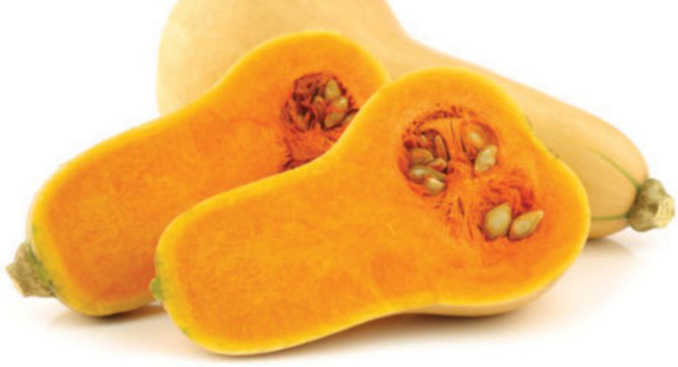Squash for Every Season

Rich in history and nutrition, squash of all kinds pack plenty of antioxidants—and good taste.
Did You Know?
Squash’s history in the U.S. predates European settlement by thousands of years. Originating in Central America and Mexico, it was a staple for Native Americans for more than 5,000 years. Europeans were introduced to squash during their explorations of North and South America. Today, Florida, Michigan and California lead the country in squash production.
Powers
There are a variety of health benefits attributed to squash, which is typically grouped into two categories: winter squash (such varieties as acorn, pumpkin and butternut squash) and summer squash (which include zucchini and yellow crookneck squash). Summer squash is more tender and has a thinner, edible rind. Both types are high in Vitamins A and C, powerful antioxidants. They’re also chock-full of carotenoids, particularly lutein and zeaxanthin, which have been recognized for reducing the risk of chronic eye diseases, like age-related macular degeneration and cataracts, and for their anti-inflammatory properties, which may be beneficial to both the cardiovascular and gastrointestinal systems. Recent studies also suggest that the polysaccharides found in squash, which come from its high carbohydrate content, may help protect against diabetes and aid in insulin regulation.
Buy | Store | Grow
The main difference between summer and winter squash is the stage of maturity at which it’s harvested. Summer varieties are harvested while immature and tender, while winter varieties are allowed to harden. Choose winter squash that have dull, hard rinds. Available now through March, winter squash can last anywhere from one week to six months, depending on the type. They should be stored in a cool, dry place. Refrigeration is only recommended once the squash is cut, otherwise the humidity will cause deterioration. When shopping for summer squash, which are available year-round, inspect the rind and opt for those that have a sheen and are blemish-free. Store summer varieties in an airtight container in the fridge for up to seven days, and avoid washing them until you’re ready to use them. Should you choose to grow your own squash next year, methods will vary depending on the kind you want to cultivate. In general, squash need considerable growing space, lots of sun and good drainage. Usually, the plants are prolific producers, so you’ll have plenty to use and share. Summer squash can be harvested when they’re young—no more than 6 to 8 inches long. Winter squash are harvested when fully mature, at the end of the growing season.
Tasty Treat
Squash seeds make a nutritious snack. Remove the seeds from a winter squash (pumpkins, butternut or acorn work well). Rinse them with water and remove strings and squash remnants. Pat dry and place 1 cup seeds in a small bowl. Stir in 1 tablespoon of olive oil and ½ teaspoon salt (or to taste), until evenly coated. Spread evenly on a baking sheet lined with parchment paper. Bake at 275 degrees Fahrenheit for 15 minutes, or until the seeds start to pop. Remove from oven and cool before serving. Enjoy!<'p>